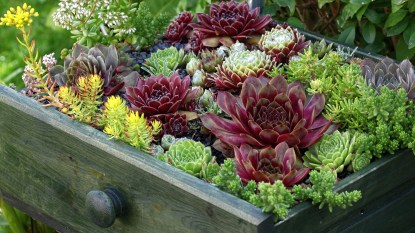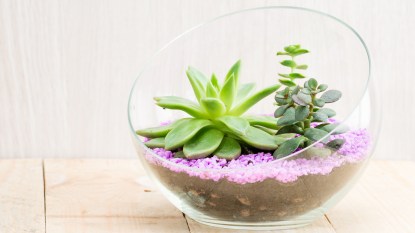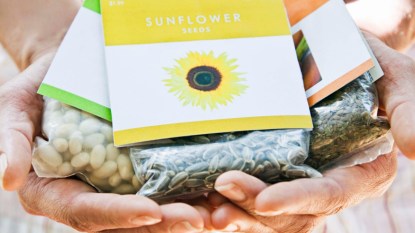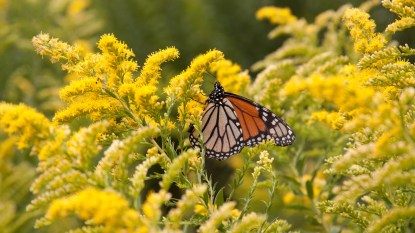Pro Tips: How To Care For Tulips + How to Turn Potted Tulips Into A Stunning Garden Display
How to keep the blooms healthy in your garden — and ensure they last longer in your vase!
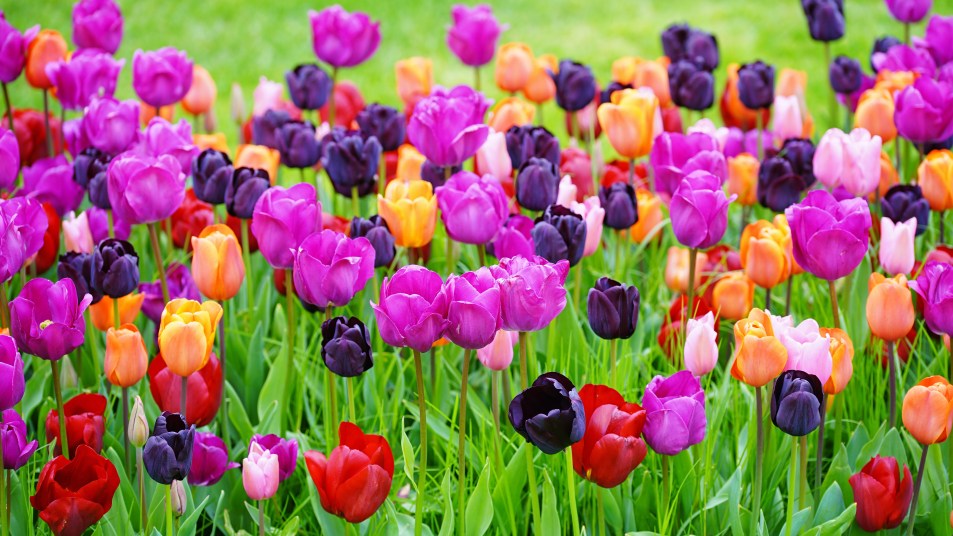
There’s nothing like the sight of colorful tulips popping up out of the ground — a sign that spring has sprung and sunny days are ahead! If you’ve transplanted potted tulip plants this spring or are thinking about planting tulip bulbs this fall, you might be wondering how to grow or how to care for tulips. So we asked garden pros for their best strategies to care for tulips — both in your garden and once you’ve harvested them. They also shared their best planting and growing tips and tricks. Read on for the easy how-to’s. Soon you’ll have the most beautiful bounty of blooms on the block.
Why should you plant tulips?
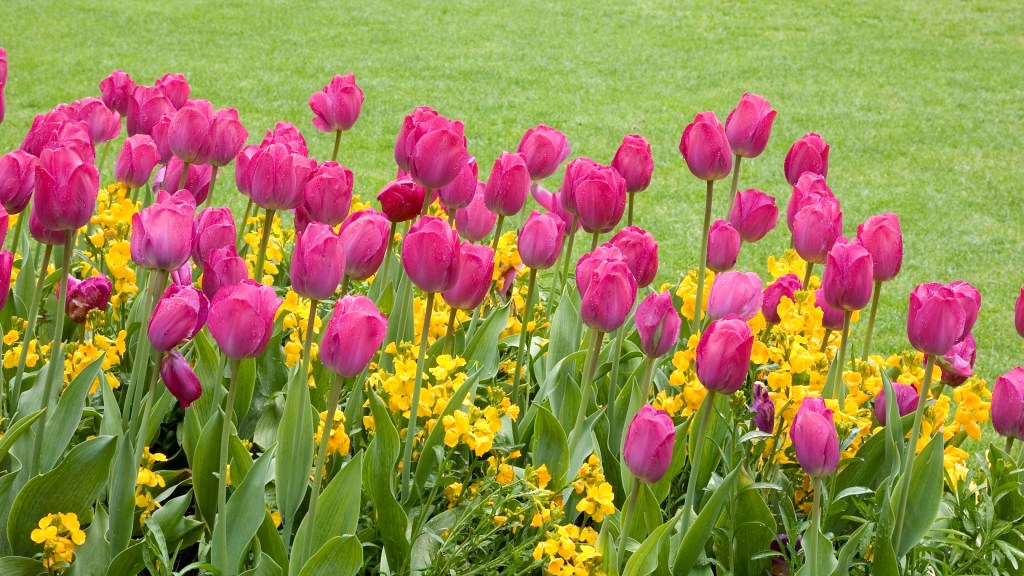
“Tulips bring vibrant interest and color to a spring landscape, a time when few other plants are in bloom,” says Laura Janney, founder of The Inspired Garden. “Although individual tulip blooms are relatively short-lived, their striking beauty makes them a worthy addition to any garden.” Tulips are bulb flowers, meaning they emerge, grow and get vital nutrients from a small underground structure known as a bulb.
What’s more: The blooms are rich in symbolism in the language of flowers, representing spring renewal, love and prosperity, she says. Tulips are a perfect cutting flower and look gorgeous styled in a simple vase. Fun fact: They are one of the only flowers that continue to grow up to an inch or more in a vase. As they grow, the stems will bend toward the light for an ever-evolving, eye-catching display.
Must-read: A Kitchen Garden Is the New Trend That Brings Gourmet Flavor to Your Countertops
How to choose which tulips to plant
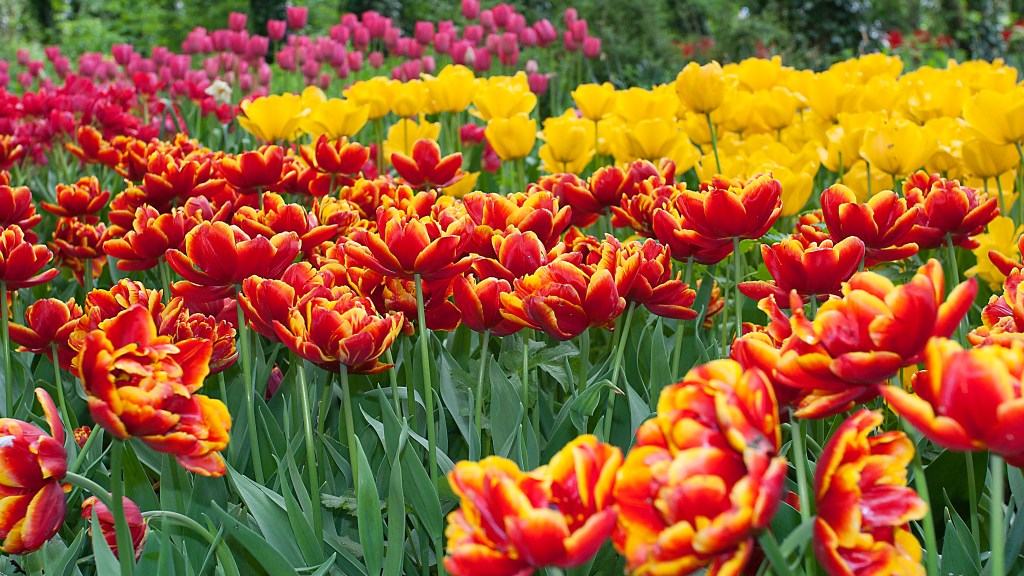
“There are several thousand varieties of tulip bulbs, so choosing the ones you want to grow might be the hardest part of the entire growing process,” says Judith Teeuwen of Breck’s Bulbs. Tulips come in a myriad of colors, sizes and shapes. Varieties include single tulips (classic flowers with six petals), double tulips (lush petals that resemble peonies), muticolored tulips (two-toned petals), parrot tulips (colorful, frilly petals that resemble parrot feathers), fringed tulips (petals with ruffled, frayed edges) and Darwin hybrid tulips (big, showy flowers with large petals). You can purchase tulip bulbs through online plant retailers or at a local garden center.
For the most interest, Janney suggests purchasing tulip varieties with staggered bloom times (early spring, mid spring and late spring). That way, you can enjoy a continuous display of tulips for a month or more. For example, consider planting a flower bed with early-blooming single tulips, Darwin hybrid tulips and parrot tulips, staggering each variety or planting them in horizontal rows. The single tulips will bloom first in the early spring, the Darwin in mid-spring and the parrot tulips will bloom in late spring. The result? You’ll have a continuous flush of colorful, eye-catching flowers.
MUST-READ: 5 Plants That Repel Mosquitoes From Your Yard, According to Garden Pros
When to plant tulips
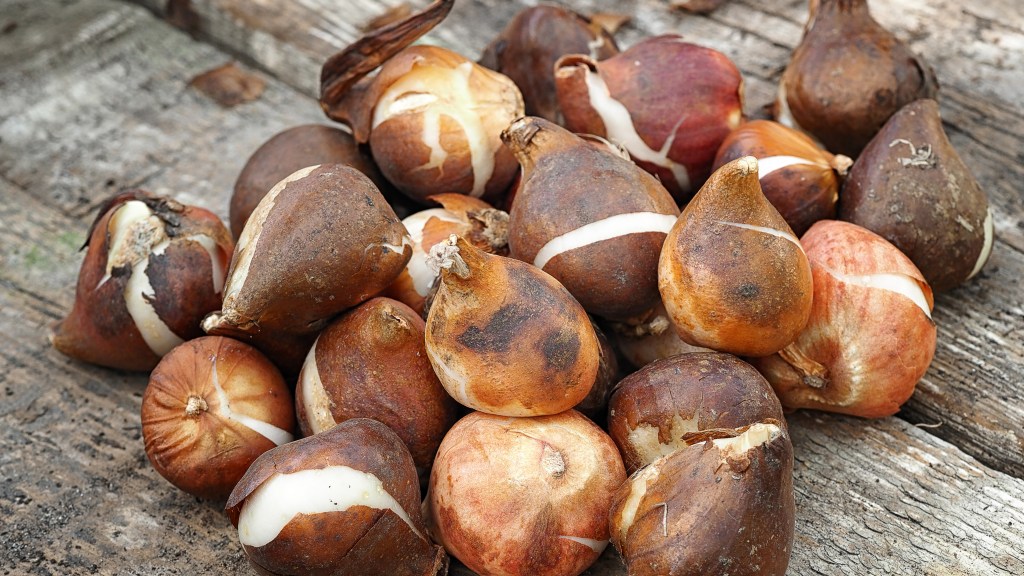
Tulips bulbs should be planted in the fall before the ground freezes. That’s because they need a cool season in the earth to begin growing their roots, notes Teeuwen. “For best results, plant the bulbs when there’s a chill in the air, typically when nighttime temperatures are between 40 and 50 degrees. That’s usually around late October to early November,” says Janney.
If you missed planting tulips last fall and are looking for a burst of their beauty in your garden now — no worries! Janney suggests purchasing already-blooming tulip plants from your local garden center and removing them from their plastic nursery pots. Then it’s easy to nestle their roots into soil for instant color. If the bulbs take root, you could have pretty tulips pop up in the same spot for years to come.
MUST-READ: How to Keep Possums Away From Your Garden: According to Pest Pros
How to plant tulips
The easy key to successfully growing tulips? “Preparing the soil prior to planting and properly planting the bulbs,” says Teeuwen. “It sounds simple — and it really is!”
Once fall arrives and nighttime temperatures are between 40 and 50 degrees, you can plant your tulip bulbs. Choose a spot that will get full sun with minimal shade. The bulbs are already fertilized, so you don’t need to take any further steps to fertilize them, notes John Faerber, Director of Horticulture for The Lake House on Canandaigua. But if you have poor soil, Teeuwen suggests adding a little compost or aged manure to the soil and mixing it in thoroughly.
Also smart: Mix a little sand or humus (available at garden centers) into the soil at this stage. That will help with drainage and reduce the risk of your tulips developing diseases or a fungus problem. After completing this step, wait a few days before planting your bulbs to allow the soil to settle, Teeuwen says.
Next, dig 6”-deep holes in your soil, then place a tulip bulb in each hole with the pointed tip of the bulb facing upward. Lightly cover each bulb with soil, then gently tamp down the soil. “Water soil well after planting to ensure that your tulips develop a strong root system before going dormant during winter,” advises Teeuwen. Dormancy is the state of rest that bulb plants go into during the winter before they reemerge and blossom in the spring.
To see tulip bulb planting steps in action, check out this YouTube video from @edenbrothers8767
How to care for tulips
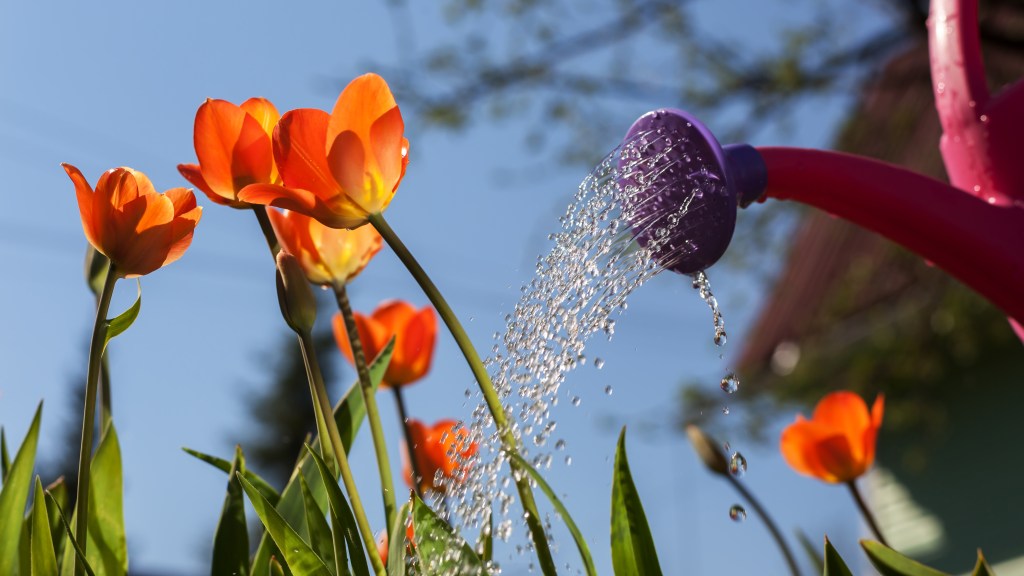
Once your bulbs begin to sprout in the spring, Faerber suggests applying an organic plant fertilizer (available at garden centers or plant nurseries) to soil. This will help the plants grow lively and lush blooms. Water tulip plants deeply but infrequently in the spring, allowing the soil to dry out between waterings, suggest Sally Allsop, founder of the online gardening website All That Grows.
Your tulips should bloom for about two to three weeks on average, notes Allsop. After your tulips have bloomed, snip wilted flowerheads from their stems. Leave the foliage on the plants and allow it to yellow and wither. This aids in the development of the bulbs and allows them to store energy for the next growing season, she notes. Once the leaves turn completely yellow and die, you can remove them, says Janney.
Note: Unless your tulips are hardy perennial tulips, like Darwin hybrids, they might not re-emerge the following spring, even if you take all of the above steps to keep them healthy. To ensure the blooms return, lift bulbs from the ground and store them in a cool, dry spot in your home during the summer, then replant them in in the fall, using the planting steps above, suggests Teeuwen.
You can also propagate tulips through offsets, or daughter bulbs, explains Allshop. These develop alongside the main bulbs. You can plant them in other sunny spots in your yard or garden for more flourishes of tulip flowers. Simply dig up your tulip bulbs, remove the daughter bulbs and plant them in the ground in the fall as normal.
Related: Garden Pro: Growing Your Own Rosemary From Cuttings Is Easier Than You’d Think
Common tulip diseases and pest problems
Tulips are susceptible to several pest problems and diseases. Teeuwen says the most common pests on tulips are aphids (sap-sucking insects that can spread plant viruses) and tulip thrips (tiny insects that damage tulip petals and leaves and weaken plants). Tulips can also experience bulb rot, which causes bulbs to become discolored and soft due to overly wet soil. Additionally, plants can experience tulip fire, a fungus that causes brown spots and twisted growth. Tulip breaking virus, which causes streaks on petals and weakens the plants, is another risk, she says. To prevent these pests and diseases from invading your plants, she suggests regularly monitoring them, watering properly and removing any parts of the plants that become affected by these issues.
Finally, Faerber recommends planting bulbs deeper into the ground at 7” deep to prevent squirrels and chipmunks from digging them up. To ward off deer, he recommends applying Milorganite slow-release nitrogen fertilizer to soil, which has been shown to deter deer.
Must-read: How to Get Rid of Aphids: Pro Tips — Plus, How to Keep Them From Coming Back
How to harvest tulips for flower arrangements
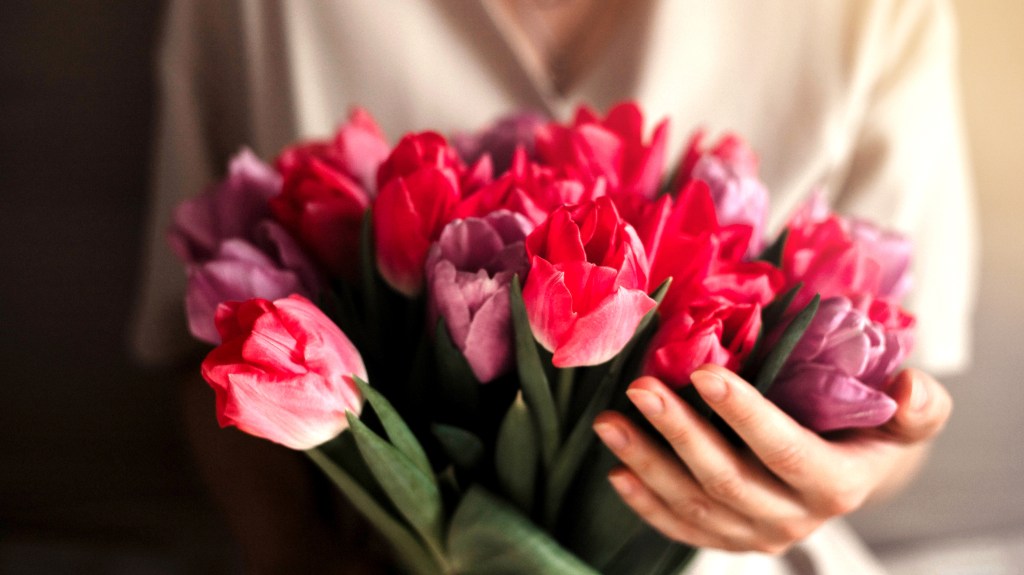
Showy tulip flowers are stunning when you style them into spring floral arrangements. “The ideal time to cut tulips for bouquets is early in the morning when the blooms are still cool and closed,” says Teeuwen. Choose flowers that are just beginning to show color but haven’t fully opened. This way, they can continue to open up and blossom in your vase. Use sharp, clean shears to cut the stems at an angle, then immediately place stems in a bucket of water to ensure they’re hydrated. Next, she advises removing any leaves that will fall below the waterline to reduce bacteria growth in the vase. Then, arrange stems in a water-filled vase and display. Change water daily and cut stems as needed, as they will continue to grow taller in the vase.
Note: Tulips can be toxic if ingested, so keep away from pets and children. Also smart: Wear nitrile gloves while handling tulip bulbs and blooms, since a chemical mostly found in the outer layers of tulip bulbs can cause an itchy rash called “tulip fingers,” according to Poison Control.
For more gardening tips, keep reading!
Garden Pros Share the Best Time to Plant Tomatoes — It’s Sooner Than You Might Think
How to Germinate Seeds Indoors: Gardening Pros Share Their Top Tricks for Success


